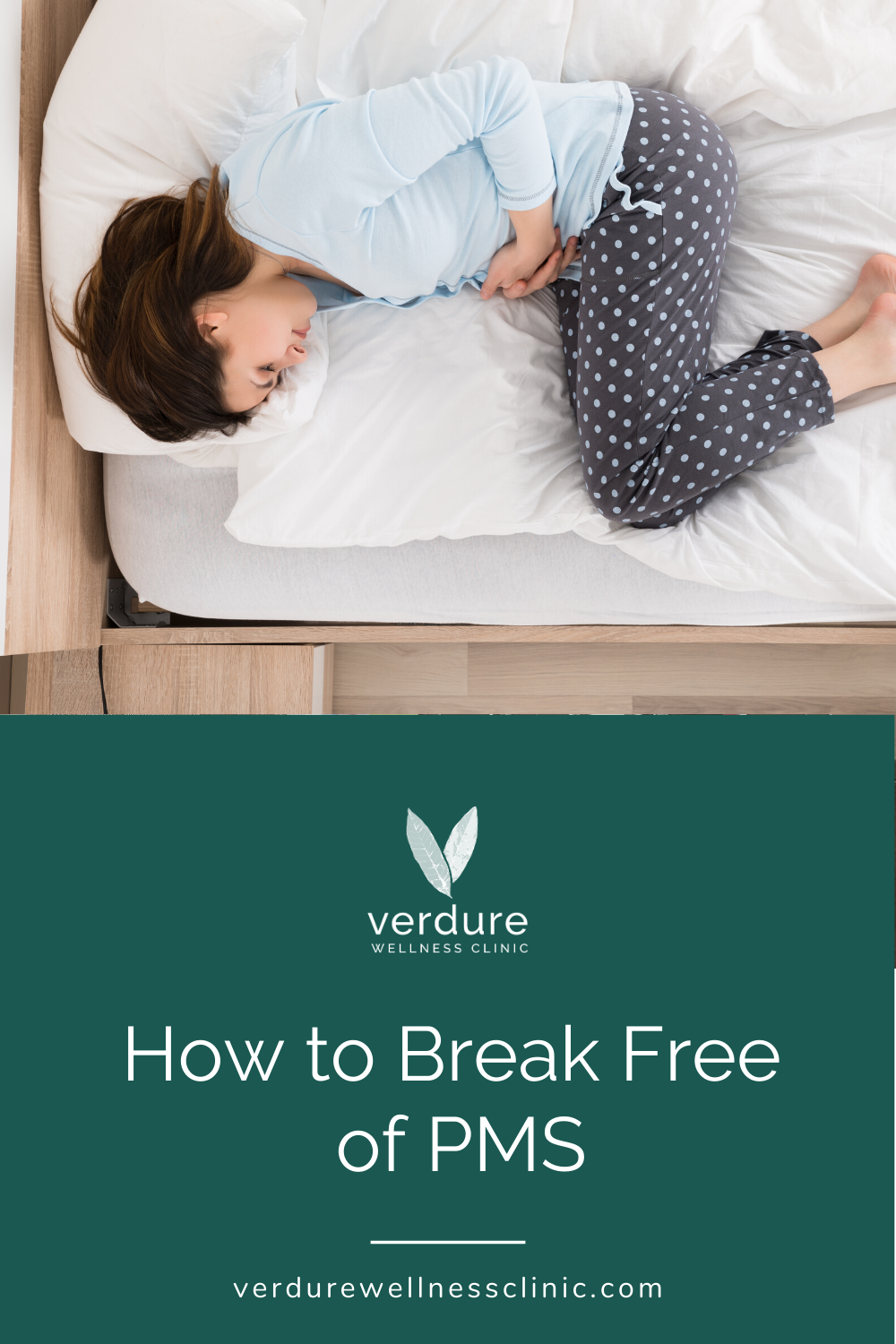PMS is common, but not normal.
What is PMS?
You’ve probably heard of PMS (premenstrual syndrome) and have related it to mood swings and cravings during or just before your period.
While this is partly true, PMS is unique for each woman, and can show up as a variety of symptoms like headaches, bloating, anxiety, depression, and cravings.
PMS is characterized by cyclic symptoms that show up in the luteal phase of your cycle, and sometimes symptoms during the menstrual phase.
There are 4 main types of PMS:
PMS-A (Anxiety): anxiety, irritability, emotional instability
PMS-D (Depression): depression, crying, confusion
PMS-H (Hyperhydration): weight gain, bloating, swelling of hands/face/feet, breast tenderness
PMS-C (Cravings): cravings for carbs and sweets, increased appetite, headache, fatigue, heart palpitations
PMDD – premenstrual dysphoric disorder
PMDD is a severe form of PMS that has a significant impact on a woman’s life and relationships.
It is a condition recognized in the DSM-IV (Diagnostic and Statistical Manual of Mental Disorders).
It is a condition of severe premenstrual mood symptoms (anxiety, depression, irritability) that affects around 1 in 20 women.
In women with this condition their brain is more sensitive to the normal hormonal shifts that happen during the menstrual cycle.
Women at higher risk for PMDD are those with a history of trauma, anxiety or depression and those with severe hormonal imbalances.
What causes PMS and PMDD?
Common causes of PMS and PMDD include:
- Inflammation
- Hormonal imbalances
- Thyroid issues
- Blood sugar mismanagement
- Nutrient deficiencies
- Chronic stress
How to Deal with PMS and PMDD
Working with a professional to get to the root cause of these issues is the best way to begin to eliminate whatever symptoms you might be experiencing.
Nutrition
- Reduce alcohol, caffeine, refined carbohydrates, and conventional dairy products
- Increase fibre intake (fruit, vegetables, flax)
- Increase essential fatty acids (nuts, seeds, wild-caught fish)
Manage stress
Try journaling, meditation, being around people you love, and taking time for yourself are all ways to manage stress to reduce hormone imbalances and PMS/PMDD symptoms.
Exercise/move your body regularly
This doesn’t have to mean intense workouts. Getting any type of physical activity that you enjoy will help improve your health!
Using nutrition strategies to optimize hormones allows women to feel better, faster!
Supporting sustainable changes in your lifestyle means that you can finally prioritize better health.
Work with nutritionist Taryn Guzik to get to the root cause of these PMS symptoms and start to experience easier pain-free cycles.



